
|
Astronomy Picture Of the Day (APOD)
 The Tail of the Small Magellanic Cloud
The Tail of the Small Magellanic Cloud
6.01.2010
A satellite galaxy of our Milky Way, the Small Magellanic Cloud is wonder of the southern sky, named for 16th century Portuguese circumnavigator Ferdinand Magellan. Some 200,000 light-years distant in the constellation Tucana...
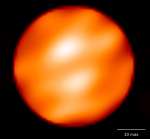 The Spotty Surface of Betelgeuse
The Spotty Surface of Betelgeuse
5.01.2010
Betelgeuse really is a big star. If placed at the center of our Solar System it would extend to the orbit of Jupiter. But like all stars except the Sun, Betelgeuse is so distant it usually appears as a single point of light, even in large telescopes.
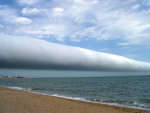 A Roll Cloud Over Uruguay
A Roll Cloud Over Uruguay
4.01.2010
What kind of cloud is this? A roll cloud. These rare long clouds may form near advancing cold fronts. In particular, a downdraft from an advancing storm front can cause moist warm air to rise, cool below its dew point, and so form a cloud.
 Comet Halleys Nucleus: An Orbiting Iceberg
Comet Halleys Nucleus: An Orbiting Iceberg
3.01.2010
What does a comet nucleus look like? Formed from the primordial stuff of the Solar System, comet nuclei were thought to resemble very dirty icebergs. But ground-based telescopes revealed only the surrounding cloud of gas and dust of active comets nearing the Sun, clearly resolving only the comet's coma, and the characteristic cometary tails.
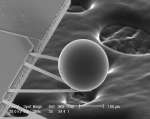 A Force from Empty Space: The Casimir Effect
A Force from Empty Space: The Casimir Effect
2.01.2010
This tiny ball provides evidence that the universe will expand forever. Measuring slightly over one tenth of a millimeter, the ball moves toward a smooth plate in response to energy fluctuations in the vacuum of empty space.
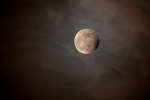 Blue Moon Eclipse
Blue Moon Eclipse
1.01.2010
The International Year of Astronomy 2009 ended with a Blue Moon and a partial lunar eclipse, as the second Full Moon of December grazed the Earth's shadow on December 31st. The New Year...
 Not a Blue Moon
Not a Blue Moon
31.12.2009
This bright Full Moon was captured on December 2nd, shining above a church overlooking the River Po, in Turin, Italy, It was the first Full Moon in December. Shining on celebrations of New Year...
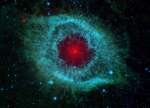 Dust and the Helix Nebula
Dust and the Helix Nebula
30.12.2009
Dust makes this cosmic eye look red. The eerie Spitzer Space Telescope image shows infrared radiation from the well-studied Helix Nebula (NGC 7293) a mere 700 light-years away in the constellation Aquarius.
 Spitzer s M101
Spitzer s M101
29.12.2009
Big, beautiful spiral galaxy M101 is one of the last entries in Charles Messier's famous catalog, but definitely not one of the least. About 170,000 light-years across, this galaxy is enormous, almost twice the size of our own Milky Way Galaxy.
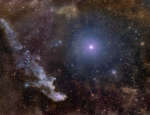 Rigel and the Witch Head Nebula
Rigel and the Witch Head Nebula
28.12.2009
Double, double toil and trouble; Fire burn, and cauldron bubble -- maybe Macbeth should have consulted the Witch Head Nebula. This suggestively shaped reflection nebula on the lower left is associated with the bright star Rigel, to its right, in the constellation Orion.
|
January February March April May June July August September October November December |
|||||||||||||||||||||||||||||||||||||||||||||||||